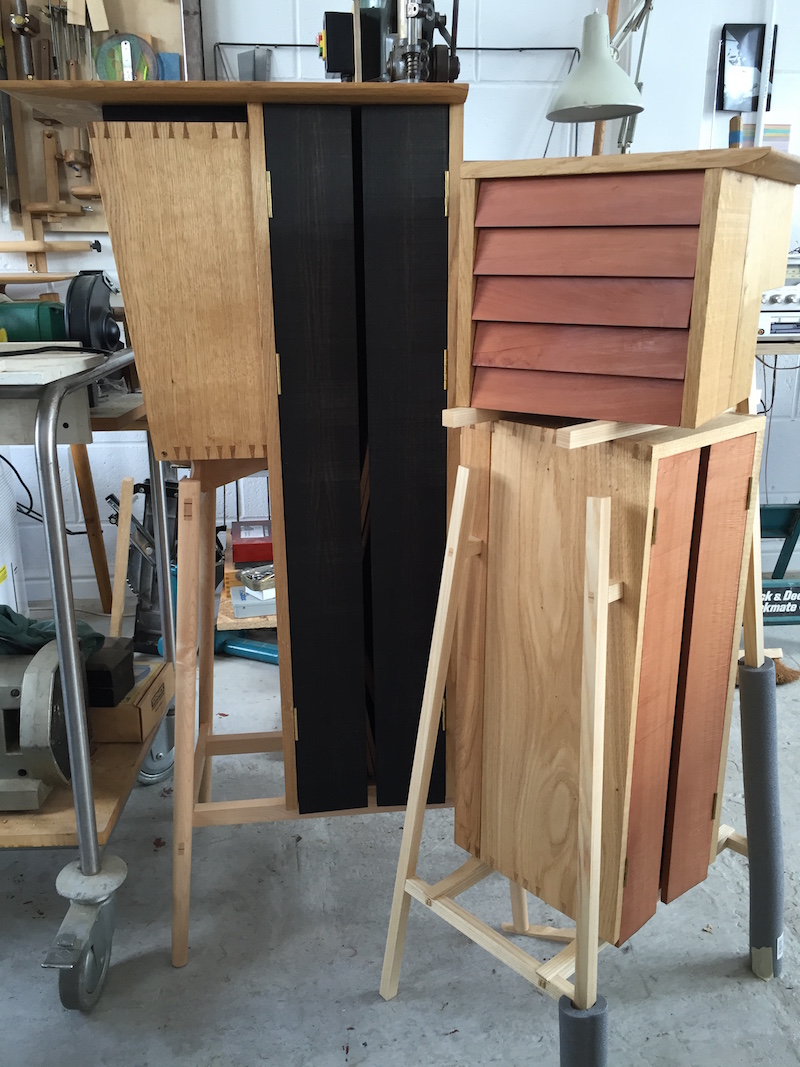Studio Visit to Helen Carnac
21 April 2016
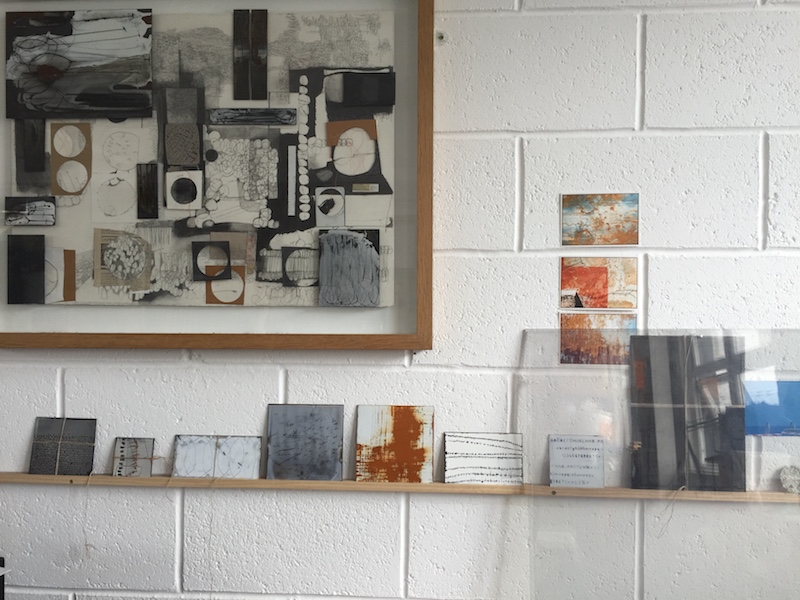
By the Thames, opposite Tate & Lyle’s sugar syrup refinery factory (busy unloading goods from a huge shipping vessel), I found Helen Carnac’s enameling studio. She's based at Second Floor Studios, which is also home to Thames Barrier Print Studio and London Sculpture Workshop.

After meeting Helen by the main gates she took me to see the view to the river, the studios have their very own path with a great view of the industry happening on the opposite side. The landscape is ever changing with buildings disappearing, others rising, large vessels coming and going, all of which help to inform and inspire Helen’s work. After we meandered between two old brick industrial buildings, now bustling with studios, we enter a white unassuming stairway and to a white corridor, leading to Helen’s studio, which she shares with her partner, David Gates.
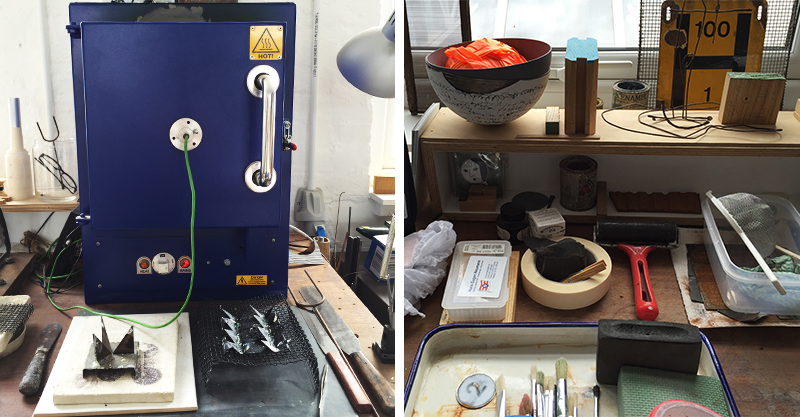
With windows on both sides it's a light space with a view of Tate & Lyle factory. On Helen’s desk is an array of different tools, machines, trivets and most importantly a blue enameling kiln. Helen is a maker, curator and an academic with an interest in mark making, and exploring the connection between material, process and the maker.
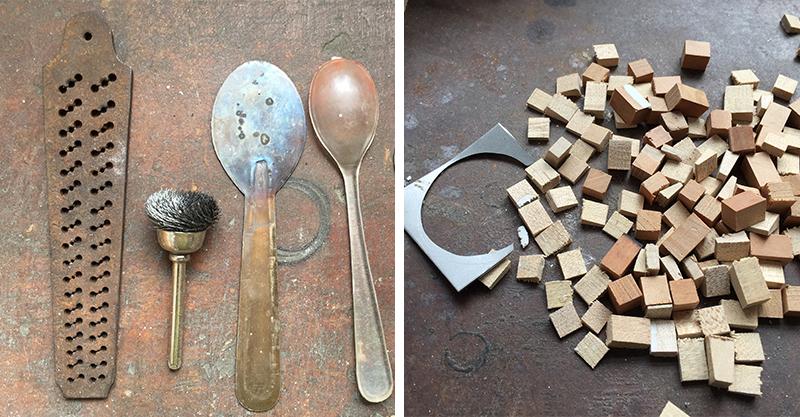
She predominately works with enamel on metals, usually steel. To enamel steel you need to sandblast the surface to ensure its clean. At this stage you can etch into the steel, either by hand, using bath acid or laser etching. At the moment Helen is experimenting with lettering and wording. She will then dip the steel into wet process enamel, allow to dry and place it in the enamel kiln. It doesn’t take long to fire, and once cooled, Helen uses a "London stone” abrasive rod to scratch back some enamel to show through the rusted steel.
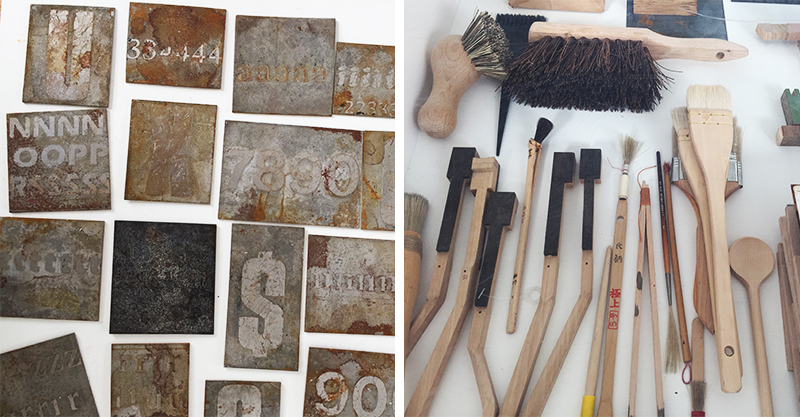
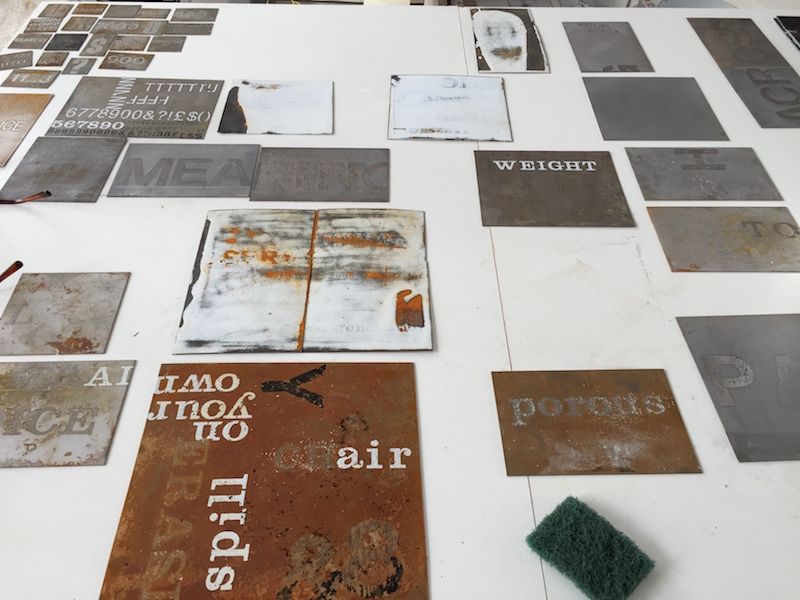
The other half of the studio is full of a different type of material - wood. David Gates, Helen’s partner is a carpenter who carefully makes bespoke furniture, cabinets and tables. His asymmetric designs have beautifully crafted joints, interesting textures and functional aspects. David is currently writing up his PhD thesis, which focuses on the communicative practices, narratives and discourses of craft practice.
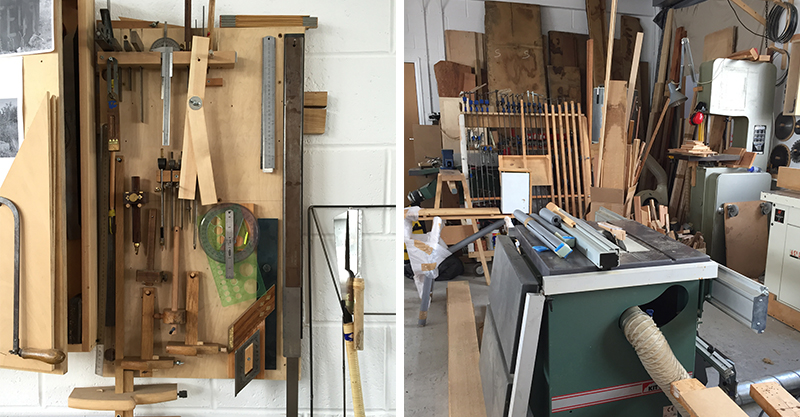
Helen and David’s studio is fascinating and I could have spent all day looking around spotting interesting things.
